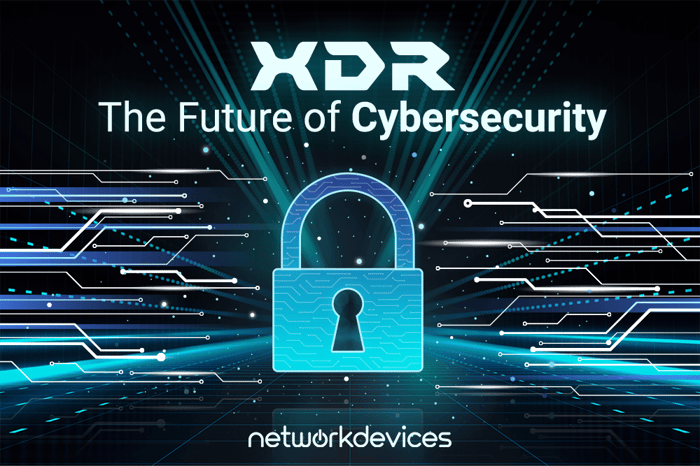You have no items in your shopping cart.

XDR: The Future of Cybersecurity, Now
As cyber threats evolve, so must our defense strategies. Extended Detection and Response (XDR) represents the next step in cybersecurity, promising a unified and proactive approach to threat detection and incident response. This article delves into the future of XDR, examining its benefits, challenges, and potential to revolutionize security operations.
XDR Demystified: A Unified Defense
Extended Detection and Response, or XDR, is a comprehensive security solution that integrates multiple security tools into a unified system. Unlike traditional security approaches that rely on separate tools for endpoint protection, network security, and other areas, XDR aims to provide holistic visibility and control across an organization’s entire security landscape.
Dave Gruber, Endpoint Security Analyst at ESG Group, explains, “XDR is designed to interpret and coordinate on threat prevention, detection, and response across all threat vectors, bringing a new level of visibility to security operations analysts”.
Cybersecurity SOS: The Need for XDR
The cybersecurity landscape is becoming increasingly complex. A recent survey highlighted that 60% of security professionals feel that threats are evolving too rapidly for them to keep up. Organizations are dealing with a growing volume of threats, from phishing and ransomware to insider attacks and poor cyber hygiene. In this challenging environment, traditional, fragmented security tools often fall short.
According to a survey conducted by Coleman Parkes Research, nearly 40% of respondents reported losing up to 10% of their revenue due to security breaches in the past year. This statistic underscores the financial impact of inadequate security measures and the urgent need for more effective solutions like XDR.
Why XDR? Unlocking the Benefits
XDR offers several key advantages over traditional security solutions:
1. Connected Defense: Catching Threats in the Act
By consolidating data from multiple sources, XDR enables security teams to detect and respond to threats more effectively. This integration helps identify patterns and detect anomalies that might be missed by individual tools.
2. Rapid Response: Neutralizing Threats Faster
XDR's unified platform allows for faster and more coordinated responses to incidents. Automated detection and response processes can significantly reduce the mean time to respond to incidents, improving overall security posture.
3. 360° Security: Seeing the Whole Picture
XDR provides a single view of the entire threat landscape, encompassing endpoints, networks, cloud environments, and more. This holistic approach helps security teams understand the full scope of potential threats and vulnerabilities.
4. Streamlined Security: Less Hassle, More Results
By reducing the number of disjointed tools, XDR simplifies security operations and reduces the burden on security teams. This streamlining can lead to cost savings and more efficient use of resources.
John Applin of WWT highlights, “If your tools are not talking to each other and not sharing data effectively, then XDR is just not going to work”. Ensuring that all components of an XDR solution are compatible and can work together seamlessly is crucial for its success.
XDR in Action: Success Stories
To illustrate the practical benefits of XDR, consider the example of a global financial services company that implemented XDR to enhance its security operations. By integrating endpoint detection, network monitoring, and cloud security tools, the company was able to identify and mitigate a sophisticated phishing attack that had bypassed traditional defenses. This proactive approach not only prevented data breaches but also saved the company millions in potential losses.
Another case study involves a healthcare provider that used XDR to detect and respond to ransomware attacks. The integrated solution allowed for real-time threat intelligence sharing and automated responses, significantly reducing the downtime and data loss typically associated with such attacks.
XDR Under the Hood: Tech Talk
For a more technical audience, it’s important to delve into the specific technologies that power XDR solutions. These include machine learning algorithms for threat detection, advanced analytics for data correlation, and automated response capabilities. XDR platforms leverage telemetry data from various sources, such as endpoints, networks, and cloud environments, to provide a comprehensive view of the security landscape.
The integration of artificial intelligence (AI) and machine learning (ML) in XDR solutions enhances their ability to detect sophisticated threats. AI-powered analytics can identify patterns and anomalies in vast amounts of security data, enabling quicker and more accurate threat detection and response. Moreover, the continuous improvement of these algorithms ensures that XDR solutions stay ahead of emerging threats.
XDR Adoption: Navigating the Challenges
Implementing XDR is not just a technical endeavor; it also requires significant organizational and cultural changes. Successful adoption of XDR involves aligning the solution with the organization’s overall security strategy, fostering collaboration between different teams, and ensuring that all stakeholders understand the value and capabilities of the new system.
Security teams must be trained to use XDR effectively, and processes must be updated to incorporate the new technology. This may involve redefining incident response protocols, enhancing communication channels between teams, and continuously monitoring and optimizing the XDR deployment. The goal is to achieve a seamless integration of XDR into the organization’s existing security infrastructure.
XDR's Next Frontier: What's Ahead
Technological Advancements
The future of Extended Detection and Response (XDR) is closely tied to ongoing technological advancements. Enhanced machine learning and AI techniques, such as deep learning, are expected to significantly improve threat detection and response times. These technologies will enable more accurate anomaly detection and predictive analytics, allowing for proactive security measures. Additionally, improvements in automation and data integration will streamline workflows and reduce the burden on security teams, enabling quicker and more effective responses to security incidents. Emerging technologies like quantum computing may also play a crucial role in enhancing XDR capabilities, particularly in areas of encryption and decryption.
Industry Collaboration
The potential for greater collaboration and standardization among vendors is another promising frontier for XDR. As the cybersecurity landscape evolves, interoperability between different security products becomes increasingly important. Standardized protocols and frameworks will facilitate seamless integration and collaborative threat intelligence sharing between various security solutions, leading to more comprehensive and cohesive security strategies. This collaboration can also drive innovation as vendors work together to develop new features and capabilities that address emerging threats.
Challenges to Adoption
Despite the promising advancements, there are several challenges to the widespread adoption of XDR. Integration complexity remains a significant hurdle, as organizations must often deal with legacy systems and disparate security solutions. Additionally, the cost of implementing XDR solutions can be prohibitive, particularly for small and medium-sized enterprises. Organizational change is also necessary, as adopting XDR often requires a shift in security strategies and workflows. Overcoming these challenges will require careful planning and investment in both technology and training. Furthermore, the potential for alert fatigue due to the large volume of data XDR systems process must be managed effectively.
Criticisms and Considerations
While XDR offers numerous benefits, it is not without its drawbacks. One major criticism is the risk of vendor lock-in, where organizations become overly dependent on a single vendor's ecosystem, potentially limiting their flexibility and options. To mitigate this risk, it is essential to carefully evaluate vendors and consider open standards and interoperability when selecting XDR solutions. Additionally, organizations must weigh the costs and benefits, ensuring that the chosen solution aligns with their specific security needs and budget constraints. The potential for false positives and negatives in XDR systems also needs to be addressed, necessitating ongoing tuning and refinement of algorithms.
A Promising Future
In conclusion, XDR has the potential to revolutionize cybersecurity by providing more comprehensive and integrated threat detection and response capabilities. The advancements in AI and automation, coupled with increased industry collaboration, will drive the evolution of XDR solutions. However, organizations must be mindful of the challenges and criticisms, carefully evaluating their options to make informed decisions. With the right approach, XDR can deliver significant benefits, enhancing security posture and resilience against cyber threats. As XDR continues to evolve and mature, it promises to become an indispensable tool in the fight against cyber threats, safeguarding the digital landscape for years to come.













